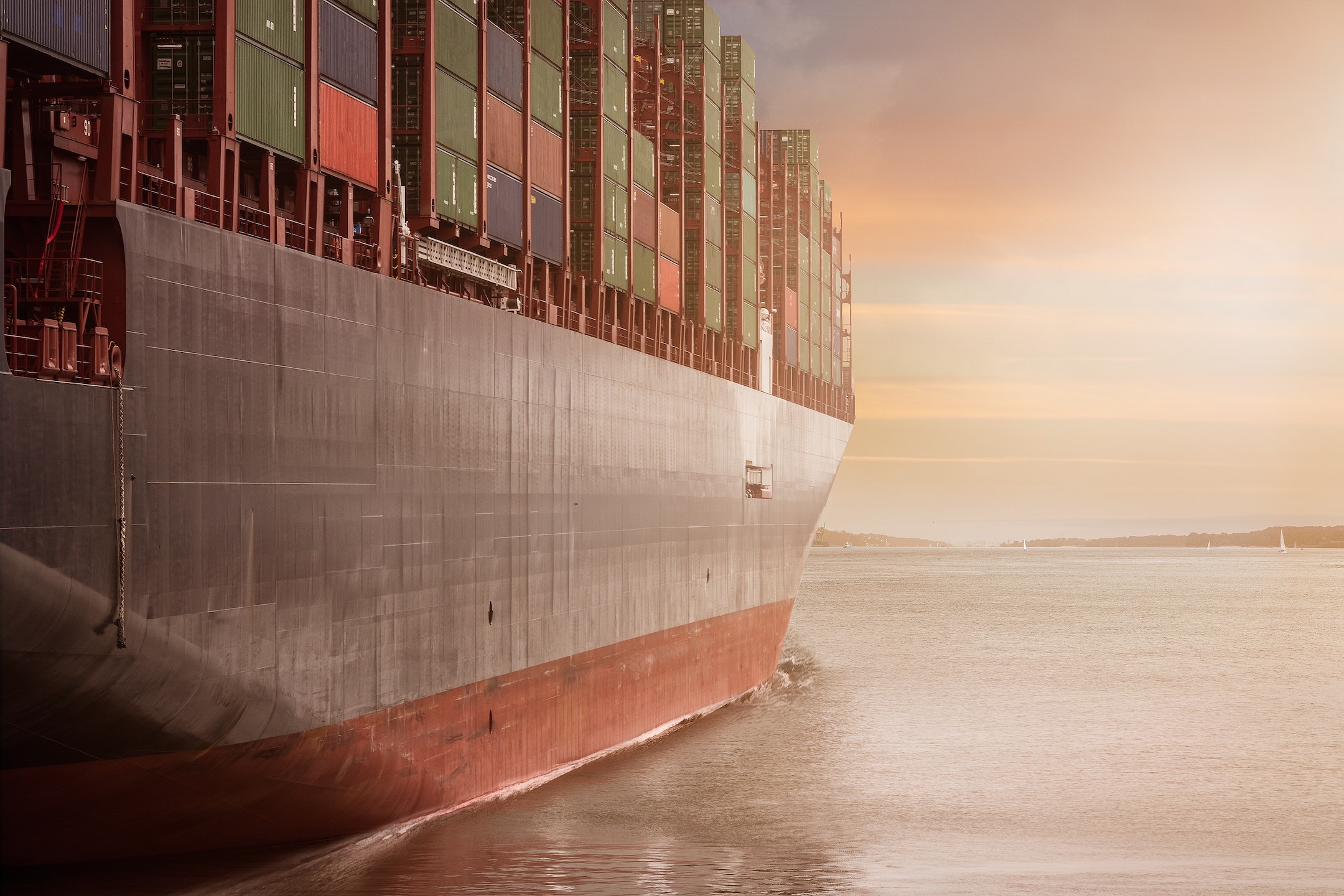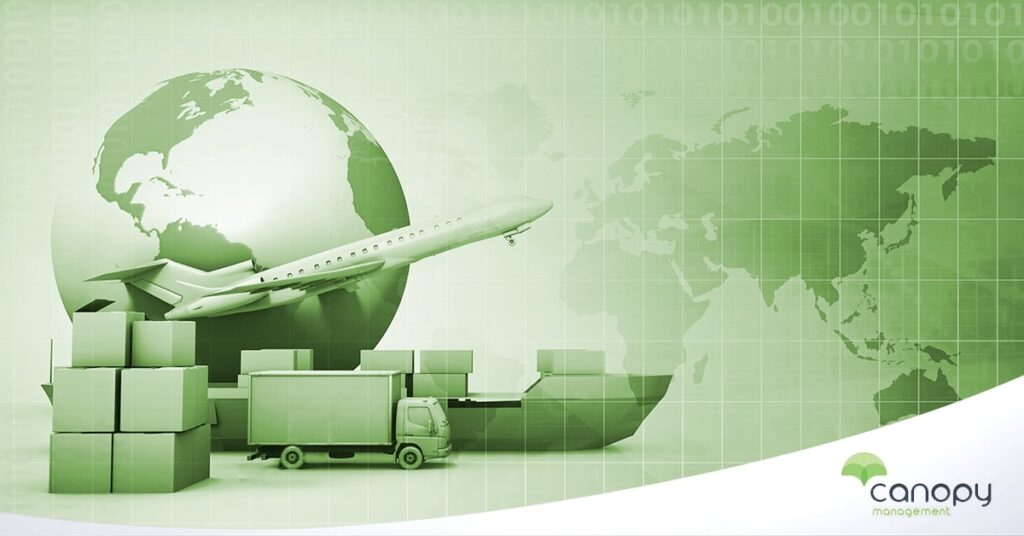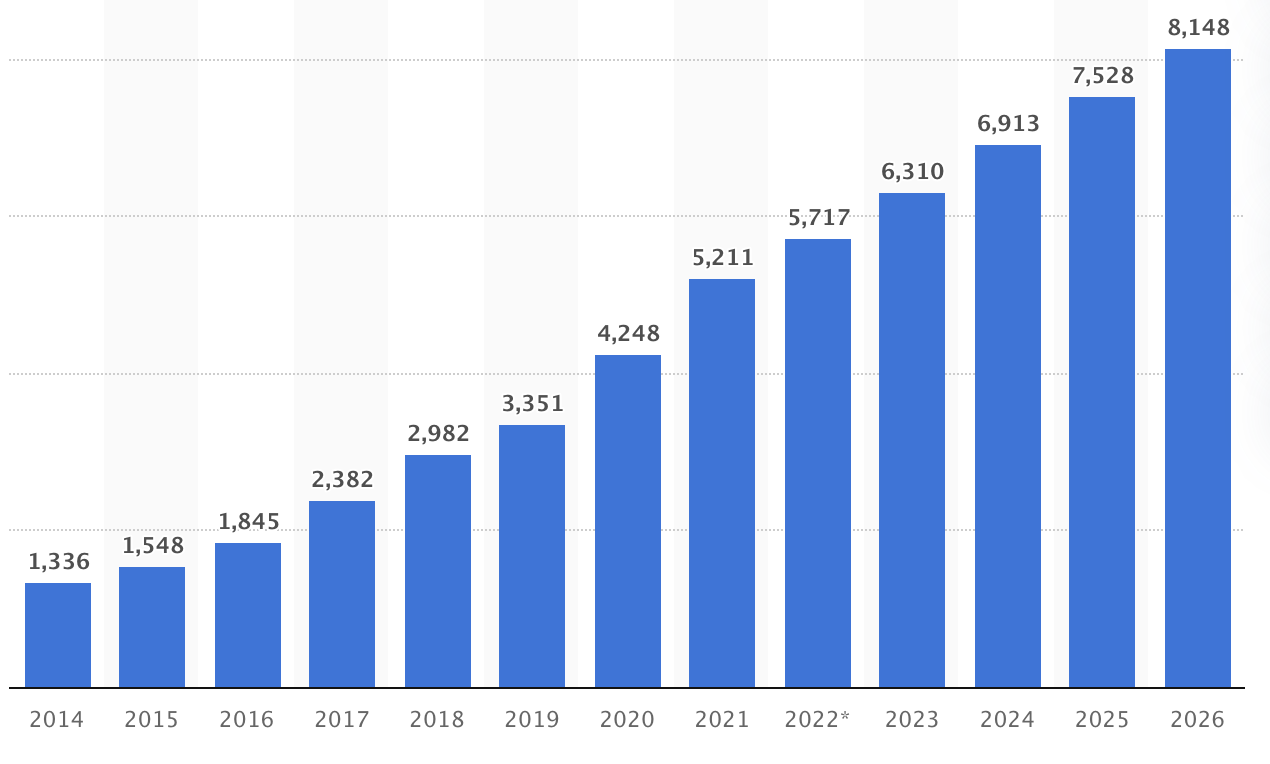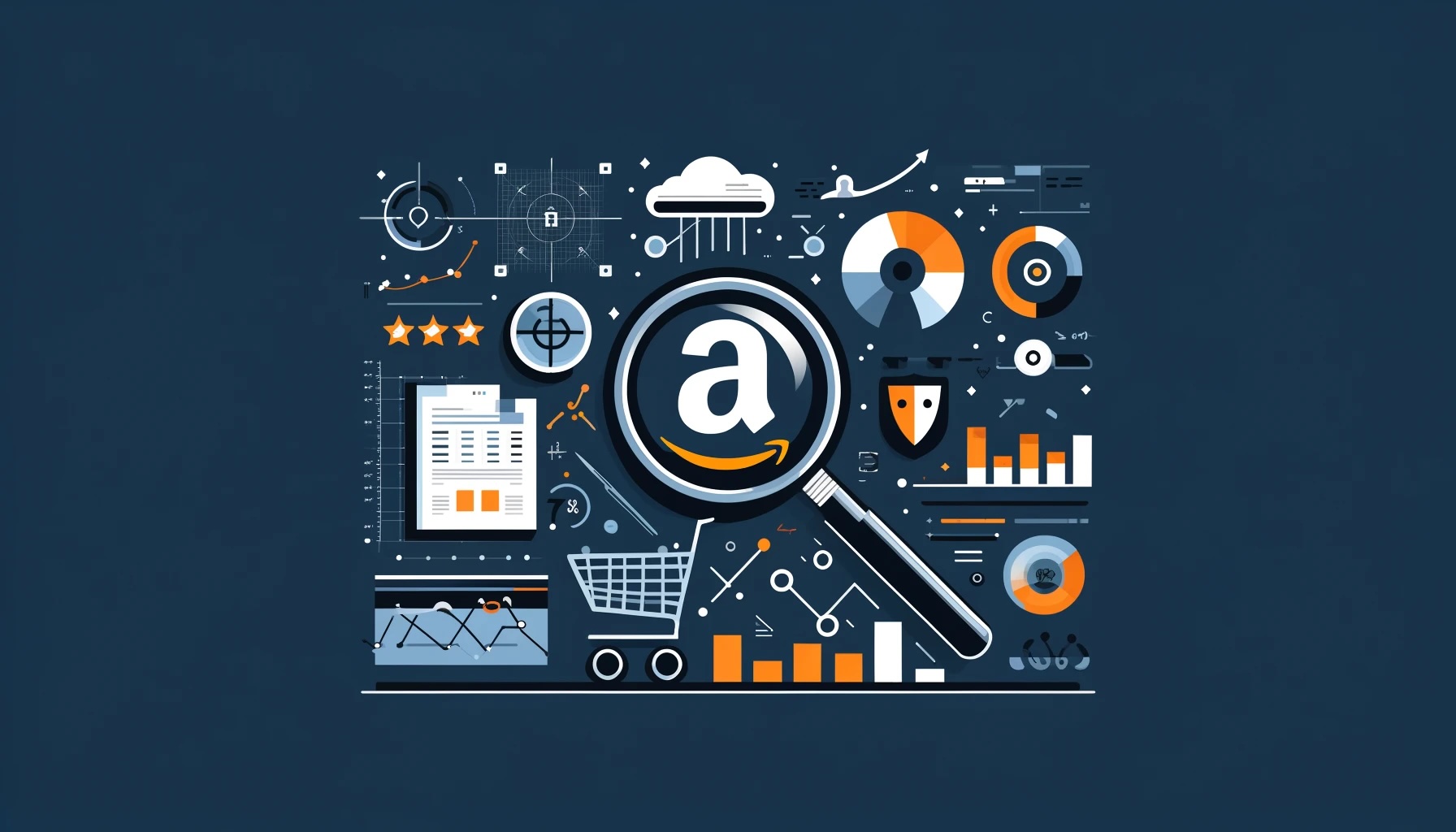3 Ways to Future Proof Your Amazon Supply Chain in 2023
Experts are Advising eCommerce Sellers to Start Planning NOW for the Next Supply Chain Crisis. Here’s How to Make Sure You’re Ready!

Amazon is renowned for the way that their own supply chain is optimized. It all begins with their proprietary Fulfillment by Amazon (FBA) platform.
Fulfillment by Amazon is a service that allows sellers to outsource the entire process of order fulfillment to Amazon. Sellers send products to Amazon fulfillment centers and when a customer makes a purchase, Amazon picks, packs, and ships the order.
Unfortunately for eCommerce sellers, the larger world (outside of Amazon’s ecosystem) isn’t nearly as well calibrated.
In late October of 2021, the city of Long Beach, California issued an emergency order allowing businesses to increase the height of the stacked shipping containers crowding their lots. Instead of a romantic, hazy view of Catalina Island, beachgoers are treated to a wall of immense container ships peppering the Los Angeles coastline.
That’s because even though most businesses have started taking a more strategic approach to supply chain modernization, for many eCommerce sellers, if we’re talking about supply chain management beyond FBA, it’s not a significant part of their business plan.
Why Are Supply Chains Under Such Stress?
Several, once-in-a-lifetime occurrences happening at the same time have had a great deal to do with why the global supply chain (and increasingly busy ports) have been so dramatically impacted.
An ongoing drought diminished the harvest of global agricultural crops. The increasingly unpredictable climate led to last year’s deep freeze and multi-state blackouts. That skyrocketed energy needs and decimated oil and gas operations across the central United States.
Recently, a sophisticated hacking operation shut down the largest U.S. fuel pipeline causing gas prices to soar. Last year, the pandemic returned to India full force leading to a huge slowdown at its biggest ports.
Stacked Containers and Hacked Pipelines
Backstopping this series of disruptions are four major recent trends:
- The global pandemic has changed everything, including an acceleration of eCommerce as a way of shopping
- International bottlenecks (such as the stuck container ship in the Suez canal) have at times brought shipping to a complete halt
- Last year’s shortages are causing companies to use the stockpiling of raw materials as a first line of defense (and inadvertently exaggerating the effects of the crisis)
- Dramatic labor problems are another (ongoing) result of the pandemic. Even when products do make it to port, fulfillment is far from guaranteed. In many cases there aren’t enough workers to get them packed up and on their way.
Global eCommerce is Undergoing Dramatic Changes
Amazon, Walmart, and Apple are all warning shoppers that they might want to take a very close look at the most recent delivery updates before choosing a big red bow on their hoped-for holiday gifts.
The pandemic helped start this mess
Maybe we can blame Amazon (and every other merchant that promises immediate delivery), but most of the industrialized world is accustomed to a well-oiled supply chain.
Unfortunately right now, many industries, including, shipping, transport, eCommerce, and retail are facing significant labor shortages.
The World Happiness 2021 Report drills down to look closely at the effects of COVID-19 and how the pandemic affected global labor. It points out a significant decline in the total hours worked and highlights the cascading effects of a supply chain (and industry) in crisis.
The article goes on to say that according to the International Labour Organization (ILO), global working hours declined by 17.3 percent in the second quarter of 2020. That is equivalent to almost 500 million full-time jobs lost within the last year alone.
Can we also blame social media?
According to the U.S. Department of Commerce, consumers spent $791.70 billion online with U.S. merchants in 2020. That’s an increase of 32.4% year over year, double the 15.1% increase in 2019.
I don’t think I’m giving away any state secrets when I say that social media plays a large role in the way that we live our lives. Now, Instagram, Facebook, Twitter, Pinterest, and TikTok are all contributing to the spike in online shopping.
Business Insider points out that according to a new Salesforce report, orders from social media sites increased 84% in the most recent third quarter. WeChat and many other Chinese social platforms have long integrated FinTech into everyday communications between friends and family. Now, it’s becoming more prevalent throughout the rest of the world.
Hoarding on an enterprise scale
Two years ago, as the pandemic turned the entire world upside down, everyday citizens began hoarding toilet paper and hand sanitizer. Prompted by high demand, the shortages changed the way people shopped. According to a survey from Oracle, over 91% of shoppers have made changes to their buying behavior and are routinely stocking up on merchandise.
Now, it’s international corporations that are panic buying. From hip electric car manufacturers to flashy Silicon Valley technology companies, large companies are buying more material than they need, mirroring the behavior of most of the industrialized world just 12 months ago.
Amazon FBA sellers are very aware of this fact. This “me first” behavior has stretched supply chain networks to unsustainable levels.
The Effects of Supply Chain Disruptions are Intertwined
An October, 2021 article in the Wall Street Journal, spoke of how transportation executives were navigating the supply-chain gridlock frustrating U.S. importers. The Journal said that in many cases, the supply chain ground to a complete halt because of the lack of “a simple piece of steel.”
The trailer chassis that are used to ferry containers from dockside terminals to Amazon warehouses have become increasingly difficult to source. Experts are saying that the (more than) 70 container ships lining the southern Californian coast are there in large part because the existing supply of trailer chassis already have containers on them waiting to be driven to their destinations.
In Argentina, Bloomberg reports that the country’s famed vineyards are struggling to find wine bottles because of a global shortage of glass brought on by the supply chain disruptions. The lack of glass and its raw materials comes at a bad time. Alcohol consumption is up across the globe. It seems that I’m not the only one who has enjoyed an extra measure of adult beverages over the long, and sometimes stress-inducing pandemic.
At the same time, Reuters has reported on how supply chain challenges have cost Apple $6 billion in sales during the crucial fourth quarter of 2021, missing Wall Street expectations. Chief Executive Tim Cook went on to say that the impact “will be even worse during the current holiday sales quarter,” and that the “chip shortage has persisted and is now affecting most of our products.”
 Demand Has Remained Constant
Demand Has Remained Constant
In concert with the gradual slowdown of pandemic restrictions, consumers are increasing the amount of shopping that they are doing online. According to Statista, in 2021, retail eCommerce sales amounted to approximately 5.2 trillion U.S. dollars worldwide. That number is forecasted to jump by 56 percent over the next few years, reaching about 8.1 trillion dollars by 2026.
We’ve all become accustomed to shopping online. It’s no longer a question of pandemic safety or restrictions, now it’s a matter of convenience.
As Amazon sellers, you have a full slate of things right in front of you to concentrate on. Amazon product listing optimization, PPC campaign strategy, and Demand-Side Platform advertising are all important facets that add up to eCommerce success. The far-away supply chain issues are often out of sight, AND out of mind.
That’s why now is a great time for you to come up with a solid, consistent Amazon supply chain strategy.
Here are three ways that Amazon (and other eCommerce) sellers can not only get ready for the next disruption, but end up with a stronger, more agile business model in the long run.
3 Ways to Prepare for the Next Big Supply Chain Disruption
1. Have a plan B delivery option in place
There’s probably nothing you can do to eliminate every component of global supply chain disruption. Still, having a supply chain strategy is crucial. Working closely with your suppliers, considering an affiliation with a third party logistics company, and keeping a very close eye on your inventory management are great first steps.
Third-party logistics refers to a partnership or service that helps eCommerce merchants manage their supply chain. While they’re not the only solution to storage, picking, and packing your orders, having a backup supply of inventory on hand (away from Amazon) is sometimes exactly what you need to keep moving forward.
An honest, early communication with your warehouse and suppliers might also help you locate another supplier to get your product pointed towards an Amazon fulfillment center. It’s always a good idea to place an experimental test order early on before a crisis arises. That could lead to an additional supplier relationship and might give you a way of keeping your business moving forward. OR, it could as easily result in a new product and niche.
During times of uncertainty, when it involves the Amazon marketplace, the more options the better.
2. There’s strength in numbers
If you’re not a part of an eCommerce sellers group, now’s the time to start!
The simple, undeniable fact is that it’s invaluable to surround yourself with others that are facing the same pain points, or trying to puzzle through similar Amazon logistics questions. Looking for a new source for an important component of an Amazon product? You might find it while listening to a speaker (or in line for a cocktail) at the next eCommerce meetup.
Worried that your local Amazon distribution center might not be able to keep up with demand? How about a well-reviewed local 3PL (Third Party Logistics) company with good rates? The answer to that one is probably as near as the Amazon sellers Facebook group, webinar, or trade show that you had been meaning to sign up for.
If you’re looking for a group to level up your ecommerce knowledge or help get your product into the hands of Amazon customers, here are two great places to start:
3. Put technology to work for you
If you’re considering a new career, pursuing a degree in data analytics would be a great place to start. Every successful SaaS (Software as a Service) company is looking for data experts. I’ve seen postings on LinkedIn that hint at an active pulse as the starting requirement for job applicants.
These days, big data, artificial intelligence, advanced supply chain, and inventory management software are all featured topics at the most influential ecommerce conferences.
Big data is helping modernize the supply chain
These emerging technologies help companies to use data to uncover insights and modernize their supply chain management. Among the ways that data analytics can help ecommerce companies are through quality control, analysis of weather patterns, cash flow management, and predictive strategies.
Artificial intelligence and machine learning
Artificial intelligence involves computer systems that can mimic human intelligence. Machine learning is a field of study that uses computers to make predictions. Using historical data, they can even make decisions without human coaching or oversight.
AI and machine learning can help businesses develop automated processes that use predictive modeling to help make critical decisions including inventory management and shipping logistics.
Supply chain management software
Many of the top eCommerce SaaS companies have recently developed and launched their own proprietary supply chain management software. Helium 10 has Inventory Management. JungleScout has Inventory Manager. Both of them claim to take a data-driven approach to help ecommerce sellers with their Amazon inventory management.
The idea is to create predictive models and algorithms that enable sellers to customize their own supply chain models. That results in the ability to adjust lead times and reorder frequencies to sync with the Amazon supply chain model. With a better understanding of a supplier’s shipment speeds, forecasting becomes much less of a guessing game.
I think we all are starting to realize that this won’t be the last eCommerce supply chain challenge that we are forced to navigate. Taking these few simple steps will go a long way towards making sure that the next one isn’t a huge bump in the road.
Instead, by following these suggestions, you’ll be able to level up and distance yourself from those who weren’t ready.

How CANOPY Management Can Help
CANOPY Management is a full-service marketing agency for Amazon sellers. Our team consists of former Amazonians, multi-million dollar sellers, and award-winning experts. When you consider the many ways that CANOPY Management can help you grow your business, you’ll see why selling on Amazon is much easier “under the Canopy.”
- Strategic Growth Planning
- Listing Copywriting Optimization
- Listing Photography
- Product Videography
- Advertising Management
- Customer Service
- Demand Side Platform (Amazon DSP)
- Amazon Posts
- Full Service Management
- Amazon Review Aggregation
 Demand Has Remained Constant
Demand Has Remained Constant 

